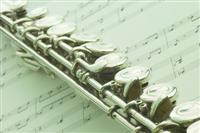 Band directors tend to be Jacks of all trades. We know how to play every instrument in the band but yet we tend to specialize only on one, the instrument that we grew up playing. Once in a while in our teaching we will stumble across a difficult case, a student that for whatever reason is having difficulty understanding and executing the proper technique or embouchure for their instrument.
Band directors tend to be Jacks of all trades. We know how to play every instrument in the band but yet we tend to specialize only on one, the instrument that we grew up playing. Once in a while in our teaching we will stumble across a difficult case, a student that for whatever reason is having difficulty understanding and executing the proper technique or embouchure for their instrument.
Think back to your experiences with a flute player that just can’t shape their air stream properly, a brass player that just can’t seem to buzz correctly, or a clarinetist that just can’t seem to get their fingers aligned right to cover the holes completely. Each of these scenarios has played out again and again over time and specialists on those instruments have developed many different tools to help aid teachers in fixing them. This series of short articles focuses on many of the different tools that are available to help you as a teacher get the best possible tone and performance out of each of your students.
Flute Air Stream Visualizers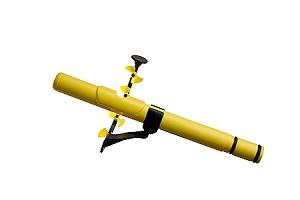 One of the most common problems every beginning flutist struggles with is how best to guide their air stream into the instrument. A strange looking yet quite effective tool for teaching this skill is known as the Blocki Pneumo Pro. Essentially it is a small arm that attaches to the flute and has on it several tiny little pinwheels. A flutist practices guiding their air stream toward each of these pinwheels, making them spin. With a little guidance the student begins to improve their tone quality and range. More advanced students use the device to practice double and triple tonguing as well as tuning and intonation issues. The device sells for around $30 and is a nice visual way to show a student what they are doing right or wrong during a lesson.
One of the most common problems every beginning flutist struggles with is how best to guide their air stream into the instrument. A strange looking yet quite effective tool for teaching this skill is known as the Blocki Pneumo Pro. Essentially it is a small arm that attaches to the flute and has on it several tiny little pinwheels. A flutist practices guiding their air stream toward each of these pinwheels, making them spin. With a little guidance the student begins to improve their tone quality and range. More advanced students use the device to practice double and triple tonguing as well as tuning and intonation issues. The device sells for around $30 and is a nice visual way to show a student what they are doing right or wrong during a lesson.
Flute Finger Positioning Tools
One of the biggest problems that I have had with my beginning flutists is that of finger position. There are several different tools that can be added on to the flute to help students remember where to put their fingers and how to properly hold the flute, some of which work better than others.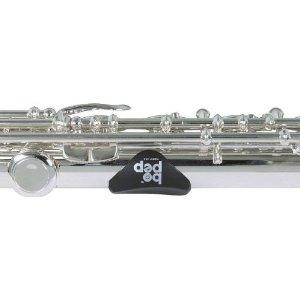 To start with there is the problem many beginners (and experienced flute players) have with improperly positioning the right hand thumb. Most flute teachers recommend that the thumb point upward toward the head joint and be centered under the first finger of the same hand. The tendency is to let that thumb rotate outward so that it is pointing away from the flute. In a pinch I have simply placed a little strip from a band-aid on the spot where the thumb should sit, providing a tactile response that helps the student remember to keep the thumb in that spot. Of course, this does not really address the orientation issue, and for that other commercial products work a little better. One of these is the Bo-Pep Thumb Guide. Selling for under $10 this little piece of plastic clips on to the bottom of the flute and has a slightly flattened shape that guides the thumb into the proper orientation.
To start with there is the problem many beginners (and experienced flute players) have with improperly positioning the right hand thumb. Most flute teachers recommend that the thumb point upward toward the head joint and be centered under the first finger of the same hand. The tendency is to let that thumb rotate outward so that it is pointing away from the flute. In a pinch I have simply placed a little strip from a band-aid on the spot where the thumb should sit, providing a tactile response that helps the student remember to keep the thumb in that spot. Of course, this does not really address the orientation issue, and for that other commercial products work a little better. One of these is the Bo-Pep Thumb Guide. Selling for under $10 this little piece of plastic clips on to the bottom of the flute and has a slightly flattened shape that guides the thumb into the proper orientation.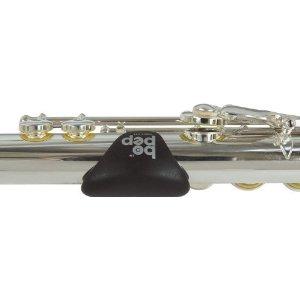 For the left hand Bo-Pep also sells a clip on rest that helps adjust the position of the hand so that the index finger does not have to be so cramped as it plays. It basically pushes the hand out and away from the flute just a bit to allow the first finger to rest more naturally. For professionals and those that play/practice a lot this can be incredibly beneficial to prevent injuries and pain
For the left hand Bo-Pep also sells a clip on rest that helps adjust the position of the hand so that the index finger does not have to be so cramped as it plays. It basically pushes the hand out and away from the flute just a bit to allow the first finger to rest more naturally. For professionals and those that play/practice a lot this can be incredibly beneficial to prevent injuries and pain
Another big problem with many flutists is the “flying fingers†issue where the student raises their fingers far off of the flute when not in use, often bringing them back down on the wrong keys. The flute Finger Position Corrector (sold by FluteWorld.com) is a simple piece of clear plastic that clips to the instrument and prevents the user from lifting their fingers excessively. Also selling for around $10 it might be a good investment for a band teacher to have in their bag of tricks.
Clarinet and Saxophone Mouthpiece Patches
When compared to the many different items one can purchase to help with other instruments the clarinet and saxophone do not have many gadgets to help with instruction. However, both instruments have some inherent positioning problems that can be fixed with a minimum of effort. 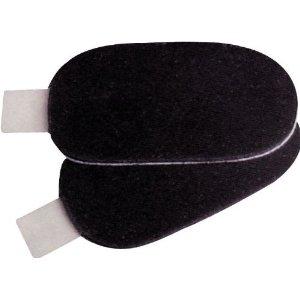 For the clarinet the most popular accessories seem to be the mouthpiece pads that reduce the amount of vibration that is transferred to the teeth. They also prevent the user’s teeth from cutting into the mouthpiece and leaving indentations. A nice side benefit I have found is that for some new players that have problems with their teeth sliding up and down the mouthpiece (due to a lack of firmness in the embouchure) the patch helps them to feel more secure and stabilize the embouchure a bit more.
For the clarinet the most popular accessories seem to be the mouthpiece pads that reduce the amount of vibration that is transferred to the teeth. They also prevent the user’s teeth from cutting into the mouthpiece and leaving indentations. A nice side benefit I have found is that for some new players that have problems with their teeth sliding up and down the mouthpiece (due to a lack of firmness in the embouchure) the patch helps them to feel more secure and stabilize the embouchure a bit more.
Be aware that some professionals argue against the use of mouthpiece patches on both the clarinet and the saxophone but at the beginning levels I have never had a problem with them and recommend them for all of my students.
A Word About Saxophone Neck Straps
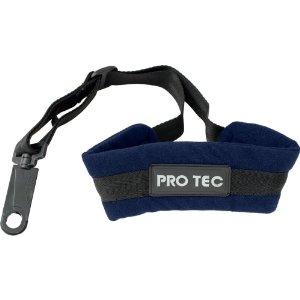 On the saxophone specific side of things the neck strap is often a badly overlooked detail in a new musicians life. Hanging a fairly heavy instrument around the neck is bad enough, but doing so with a thin, unpadded strap can be downright painful. For sax players consider having them upgrade to a more substantial neck strap, one that is easily adjustable, but that also has a clip mechanism for attaching to the sax.
On the saxophone specific side of things the neck strap is often a badly overlooked detail in a new musicians life. Hanging a fairly heavy instrument around the neck is bad enough, but doing so with a thin, unpadded strap can be downright painful. For sax players consider having them upgrade to a more substantial neck strap, one that is easily adjustable, but that also has a clip mechanism for attaching to the sax.
Some brands still sell straps with just the hook on them and while there is nothing really wrong with that style the only dropped saxes I have ever had came as a result of kids having their instrument slip out of the hook.
For larger saxes like the tenor and bari consider not using a neck strap at all and instead investing in a shoulder harness that focuses the weight of the instrument on the back instead of on the neck. These can also be used for alto saxes as well, especially when in a marching band setting.
Â
Brass Mouthpiece Visualizers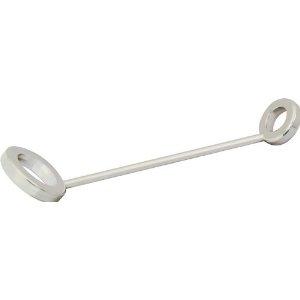 Forming the correct embouchure for a brass player can often be a lot more complicated than just saying “emâ€. For the teacher, it can be especially frustrating since we cannot physically see that is happening inside the cup of the mouthpiece as the student is playing. Pulling away the mouthpiece quickly might help a person to briefly see what is going on but to truly recognize and adjust an embouchure requires that you be able to see it in use.
Forming the correct embouchure for a brass player can often be a lot more complicated than just saying “emâ€. For the teacher, it can be especially frustrating since we cannot physically see that is happening inside the cup of the mouthpiece as the student is playing. Pulling away the mouthpiece quickly might help a person to briefly see what is going on but to truly recognize and adjust an embouchure requires that you be able to see it in use.
Mouthpiece visualizers are essentially the rim portion of a brass instrument mouthpiece without the cup or stem. The are sold either as single instrument models or as a model with one end being a trombone size mouthpiece and the other being for trumpet. Having a student practice with a visualizer in front of a mirror will help them immediately see the problems that they are having and help them to adjust their embouchure more quickly and effectively.
Bach sells single instrument mouthpiece visualizers for trumpet or trombone while Selmer makes a model that combines both the trombone and trumpet mouthpiece rims on one handle. Both styles sell for under fifteen dollars and are well worth the investment.
The Buzz Extension and Retention Piece (The BERP)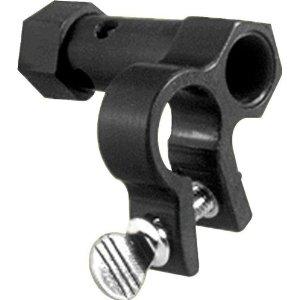 Since buzzing is such an important and vital part of any developing brass player’s routine, having a way to quickly and conveniently practice this skill is important. The Buss Extension and Retention Piece (BERP) is a simple device that slips into the mouthpiece receiver of a brass instrument and allows the mouthpiece itself to either be inserted into the receiver to play the instrument or next to the receiver for use when the musician wants to buzz. The biggest benefit to using the BERP to practice with is that it allows the users hands to be free to practice the fingerings and work the valve slides as if they were actually playing instead of having to have one hand holding the mouthpiece.
Since buzzing is such an important and vital part of any developing brass player’s routine, having a way to quickly and conveniently practice this skill is important. The Buss Extension and Retention Piece (BERP) is a simple device that slips into the mouthpiece receiver of a brass instrument and allows the mouthpiece itself to either be inserted into the receiver to play the instrument or next to the receiver for use when the musician wants to buzz. The biggest benefit to using the BERP to practice with is that it allows the users hands to be free to practice the fingerings and work the valve slides as if they were actually playing instead of having to have one hand holding the mouthpiece.
BERPs are available for every brass instrument including the french horn and tuba. All work the same way, and are a great benefit to both individual and group lessons. While a music teacher or band director can keep a supply on hand to use during class the best thing is to have each student buy one of the BERPs and keep it in their case at all times. It has been my experience that students are more likely to practice their buzzing when they have one of these devices available to use at home.
Â
